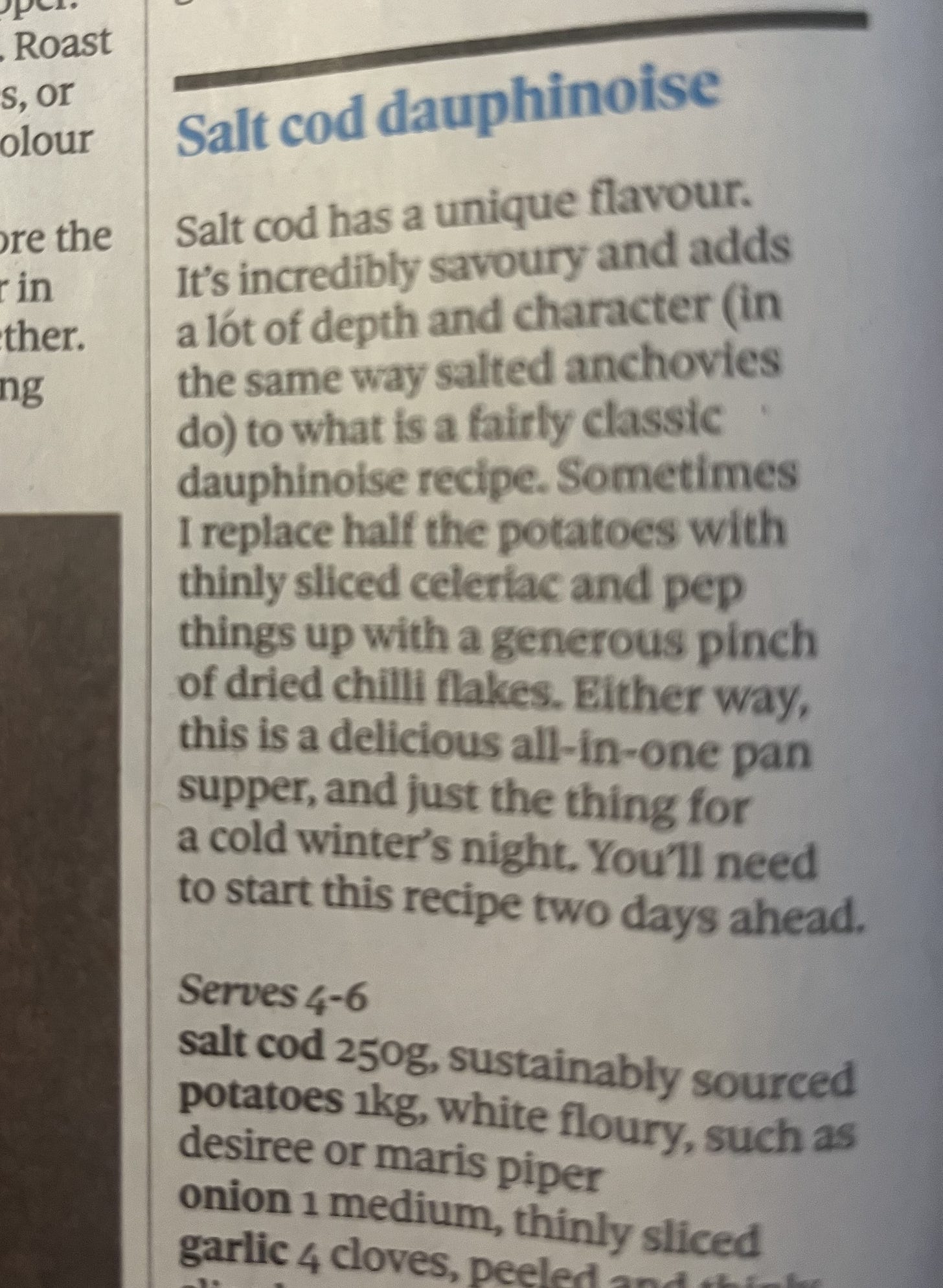Lazy, lazy, lazy: the truth about B2B prospects
And how your marketing content can take more of the strain
It’s not often a recipe makes me laugh out loud, but this one did.
It’s the offhand way the writer throws out that last line. Who has time to start recipes two days in advance?! Or - more precisely - who can be bothered?
Yes, theoretically it’s possible to carve out time for preparing meals days in advance. It’s also possible to read all seven volumes of Proust’s In Search of Lost Time, say, or to sort out those boxes in the attic that haven’t been touched since you last moved house. But it’s effort most of us will instinctively avoid.
Now, don’t get me wrong. I’m sure every single reader of this newsletter would rather read Nietzsche than watch Netflix. I’m not here to cast aspersions. However, whenever we can safely cut corners, save time and reduce the mental load in our everyday lives, we will.
The laziness of the B2B buyer
B2B buyers are lazy. Because, like us, they’re human beings. They don’t want to work any harder than they have to to understand a message, negotiate a process or make a decision.
What no one wants, I’d argue, is to spend precious minutes trying to unravel a LinkedIn post like this. (Identifying names and phrases have been redacted to save the poster’s blushes.)
If you made it to the end, you may have realised it’s meant to be a recruitment advert. And if you did make it to the end, you absolutely deserve the job.
Make them an offer they can’t refuse
Unless they’ve specifically requested your marketing asset, buyers are looking for reasons to say no. No, I won’t open that email because the subject line doesn’t seem relevant. No, I won’t read the whole of that article because it’s wordy and dry. No, I won’t study your whitepaper because it’s packed full of jargon that hurts my brain. I’ve got a million other things to do with my time.
As writers of B2B content, there are steps we can take to make it easier for our readers to say yes:
Drop the jargon. If you mean ‘quicker’, say that - not ‘accelerated’ or ‘with greater velocity’.
Lead with the main message. Don’t bury it in paragraph three, after two hundred words on how ‘proud and delighted you are to announce…’
Explain the relevance. Show the reader why they should care. Don’t leave them to try to work it out.
Use buyers’ language. Don’t assume that they understand your acronyms and terminology.
Make it easy to take the next step. Make your call to action clear and simple to follow.
As a warning of what can happen when this advice isn’t followed, check out ‘Lunch at the B2B café’.
As is often the case in marketing communications, everything should start with the buyer. The question shouldn’t be, ‘How can I use fancy words to beef up our proposition?’, ‘How can I fit seventeen messages into one asset?’ or ‘How can I mould this piece around our selling process?’ Instead, ask yourself: ‘How can I make our product easy to understand and, ultimately, to buy?’
I’m Heather Barnett, a freelance B2B copywriter and creator of silly videos about marketing. This is my regular newsletter with tips on creating better B2B content.
If you’ve subscribed, thank you!
If you haven’t, there’s still time…
If you have no memory of subscribing and are secretly fuming at having this email appear in your inbox, please do unsubscribe. But why not get your own back on someone you hate first, by forwarding it on and suggesting they sign up?




very good